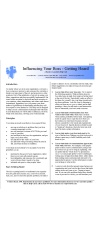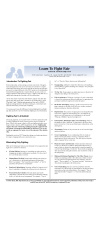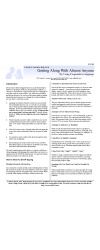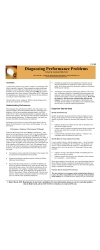Twelve Step Programs Applied To Conflict Resolution
Twelve Step Programs Aren’t Just For Addictions
Summary: A unique approach to conflict management and resolution based on the twelve step programs used in recovery programs like Alcoholics Anonymous.
1. Admit there is a problem.
The very first step in dealing with any problem is to acknowledge that there is a problem. Surrendering to the idea that control is an illusion allows one to be proactive rather than reactive which creates opportunity for solution.
2. Recognize that a power other than yourself can restore you to sanity.
You do not have to do it alone. You can go to mentors, peer managers, a coach, or even business literature to tap into additional experience, tools and solutions.
3. Choose to turn it over.
Sometimes the biggest obstacle is you. There are times when the best thing you can do is to get out of the way and let others do their jobs.
4. Analyze the situation to determine the cause.
Where did you drop the ball or where could you have handled the situation differently? Look for specific situations, especially those where you can see you were part of the problem and not the solution. The question to ask: ‘Have I truly set my people up to succeed in every area of their responsibilities?’ Look for consistent patterns in which you are the liability. Remember, if it begins with you, it can end with you.
5. Create a successful plan of action with another person.
An objective view eliminates blind spots and also brings attention to what we do not see ourselves. This step must be taken with someone with integrity and who is concerned about both the business success and your success and has a proven track record of creating results.
6. Humbly get into action.
There is a reason servant leadership creates companies that thrive financially as well as in employee/management relationships. Become a servant-leader and reap the benefits, both personally and professionally.
7. Let your side of the street sparkle.
Take stock of your personal inventory and identify where and with whom you need resolution. Then, decide what action you will take in order to complete/restore relationships.
8. Be entirely ready to implement your plan of action.
Be committed to resolving the situation. Any second-guessing or conflicting intentions should be discussed and put to rest. Willingness is a state of being, not just an attitude. It may sometimes be necessary to modify your plan of action if you are not getting the results you looked for, but don’t quit before the miracle.
9. Lead by example.
Be an active part of the solution and admit your piece of the problem. Show up as a leader who accepts personal responsibility and earn respect. You don’t need to demand it. People will go where you lead them, so lead by example.
10. Create an outline for others.
Once you have increased productivity and have the trust, respect and loyalty of the people involved (up, down and across the board), write down these steps as guidlines for yourself and others to operate from.Be available to support other managers and MIT’s through this process.
Elizabeth Tull is a Legacy Strategist who assists people in Disovering, Developing and Delivering Legacies of Excellence, Humanity and Extraordinary Living. Come visit and sign up for The Coaching Catalyst newsletter http://www.agapelegacycoach.com






